Boxer Codex
The Boxer Codex is a manuscript written c. 1590,[1] which contains illustrations of ethnic groups in the Philippines at the time of their initial contact with the Spaniards. Aside from a description of, and historical allusions to what is now the Philippines and various other Far Eastern countries, the codex also contains seventy-five coloured drawings of the inhabitants of these regions and their distinctive costume. At least fifteen illustrations deal with the inhabitants of the Philippine Archipelago.[2]
Contents and provenance
The Boxer Codex depicts the Tagalogs, Visayans, Zambals, Cagayanes or possibly Ibanags and Negritos of the Philippines in vivid colour. The technique of the paintings, as does the use of Chinese paper, ink, and paints, suggests that the unknown artist may have been Chinese.[3]
It is believed that the original owner of the manuscript was Luis Pérez Dasmariñas, son of Governor General Gómez Pérez Dasmariñas, who was killed in 1593 by Sangleys or Chinese living in the Philippines. Luis succeeded his father in office as Governor-General of the Philippines. Since Spanish colonial governors were required to submit written reports on the territories they governed, it is likely that the manuscript was written under the orders of the governor.[3]
The manuscript's earliest known owner was Lord Ilchester. The codex was among what remained in his collection when his estate, Holland House in London, suffered from direct German shelling on 27 September 1940 during The Blitz. The manuscript was auctioned in 1947 and came into the possession of Professor Charles Ralph Boxer, an authority on the Far East, and after whom the document is named. It is now owned by the Lilly Library at Indiana University.[2]
Picture gallery of the illustrations in Boxer Codex
Native (Classical period) inhabitants of the Philippines
-

Tagalog royal in red (the distinctive colour of his class) and his wife.
-

Visayan kadatuan (royal) couple
-

Visayan kadatuan (royal) and his wife wearing red, the distinctive colour of their class.
-
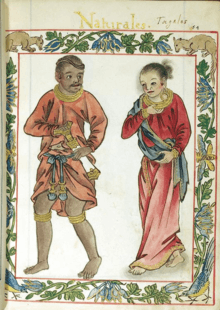
Tagalog royal couple in red, the distinctive colour of their class.
-

A native princess.
-
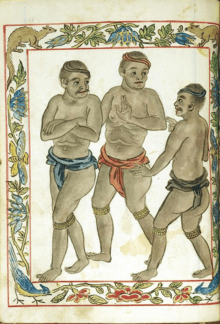
Natives, probably Tagalog alipin (slaves).
-

Native commoners wearing simpler clothes and with little or no gold jewelry.
-
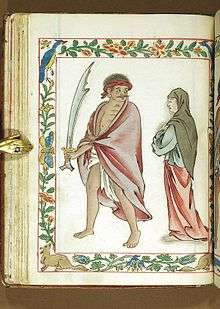
A warrior of the timawa or tumao and his wife
-

A princess from Cagayan
-

A noble warrior from Cagayan
-
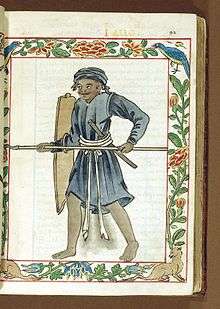
Warrior with a spear and shield
-
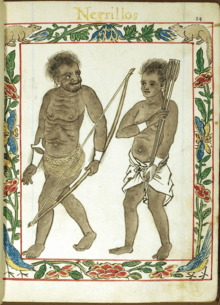
Aeta or Negrito warriors
-

Warriors from Zambales
-
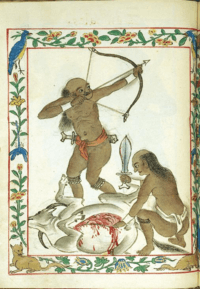
Zambal Warriors hunting
-
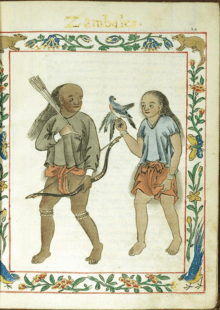
A couple belonging to the Zambal warrior class
Illustrations of resident foreigners in the pre-colonial Philippine archipelago
-
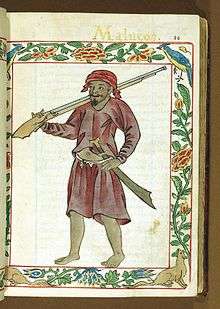
A warrior from the Moluccas
-

Warrior with Japanese swords and armor, probably from other southeast Asian territories.
-
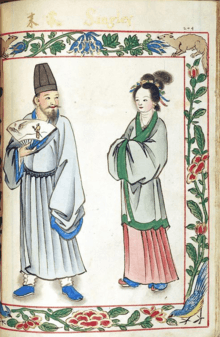
A Chinese couple wearing hanfu.
-
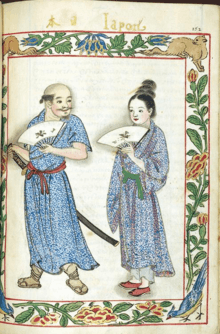
Japanese couple of the samurai caste wearing yukata
-

Ethnic Vietnamese couple from Northern Vietnam
-

A Tartar Couple
-
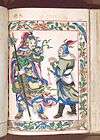
2 Chinese generals in pre-colonial Philippines
-

A Thai (Siamese) Couple
Notes
References
- Roces, Alfredo R., ed. (1977), "Boxer Codex", Filipino Heritage: the Making of a Nation, IV, Philippines: Lahing Pilipino Publishing, Inc.
External links
- Record and manuscript of the Boxer Codex at Indiana University


